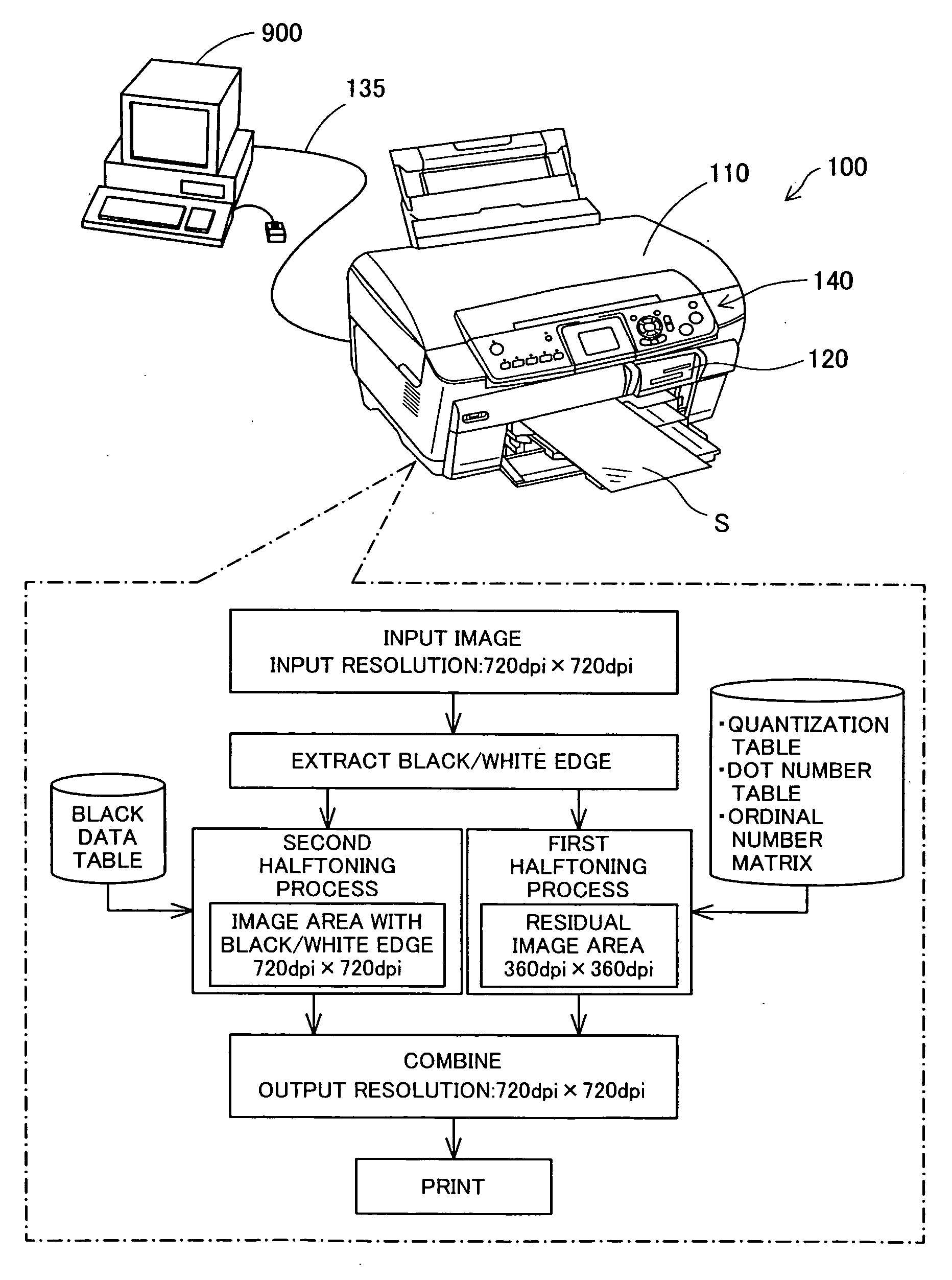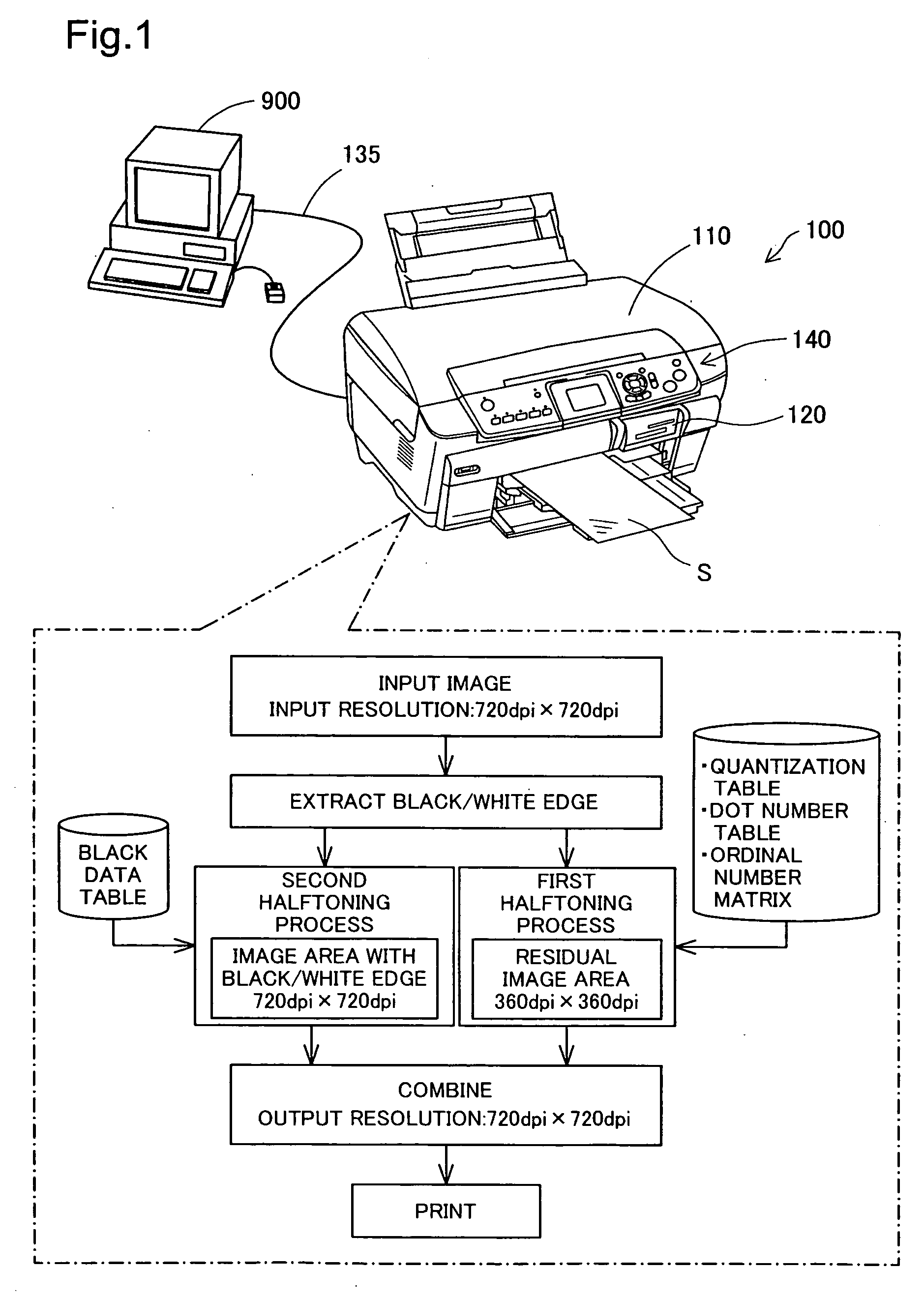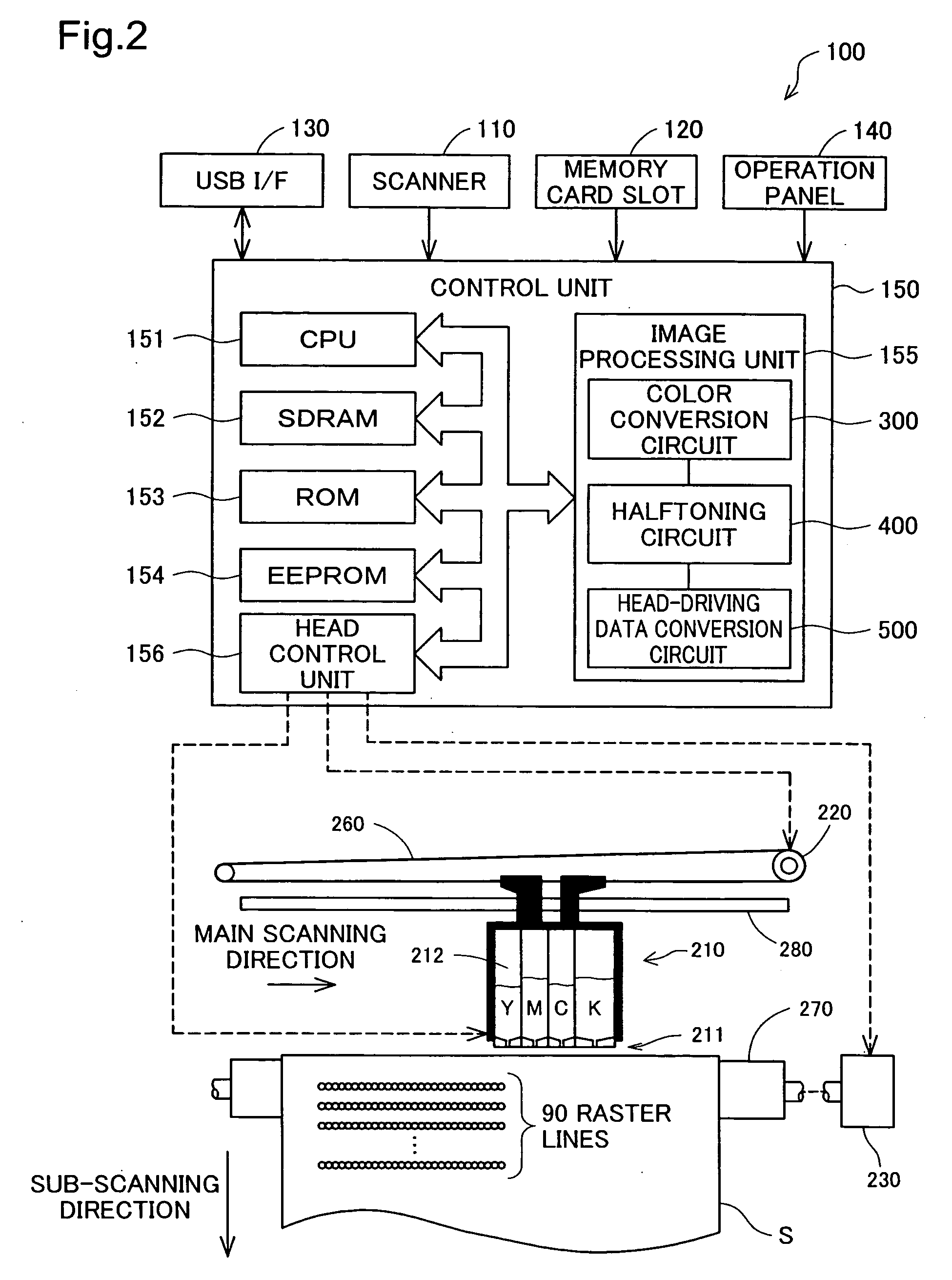Image output apparatus
a technology of image output and output apparatus, which is applied in the direction of digital output to print units, instruments, digital computers, etc., can solve the problems of unsatisfactory extension of total processing time, and achieve the effect of simplifying hardware configuration, facilitating the design change of image output apparatus, and enhancing the versatility of respective image processing units
- Summary
- Abstract
- Description
- Claims
- Application Information
AI Technical Summary
Benefits of technology
Problems solved by technology
Method used
Image
Examples
modified example 1
(H-1) MODIFIED EXAMPLE 1
[0288] In the structure of the embodiment, the printing apparatus 100 alone performs the color conversion and encoding and decoding of the quantization data. In one modified structure, the devices located before the encoded data buffer EB, that is, the color conversion circuit 300, the encoder 410, and the data selector 420, may be incorporated in a different apparatus from the printing apparatus 100. The printing apparatus 100 and the different apparatus are interconnected by a predetermined communication path. A typical example of the different apparatus is the computer 900. In this modified structure, for example, a printer driver stored in the computer 900 executes the functions of the color conversion circuit 300, the encoder 410, and the data selector 420 by the software configuration. Such modification relieves the processing load of the printing apparatus 100. The quantization data encoded by the encoder 410 and the black / white edge data encoded by th...
modified example 2
(H-2) MODIFIED EXAMPLE 2
[0289] In the above embodiment, the ordinal number matrix has the size of 128×64. The ordinal number matrix is, however, not restricted to this size but may have a greater size (for example, 512×256). The ordinal number matrix of the greater size enables the efficient halftoning of input image data in larger size.
[0290]FIGS. 39 and 40 show examples of the 512×256 ordinal number matrix. The 512×256 ordinal number matrix of FIG. 39 is obtained by repeatedly allocating the 128×64 ordinal number matrix (hatched rectangle) of the embodiment with an offset of 64 pixels in the horizontal direction. The 512×256 ordinal number matrix of FIG. 40 is obtained by repeatedly allocating the 128×64 ordinal number matrix of the embodiment with an offset of 32 pixels in the vertical direction. The repeated application of the ordinal number matrix in the general size readily gives the ordinal number matrix in the greater size.
[0291] The ordinal number matrix in the greater si...
modified example 3
(H-3) MODIFIED EXAMPLE 3
[0292] The halftoning process of the embodiment keeps the high resolution with regard to the image part consisting of only black and white colors. The color combination for the high-resolution halftoning is not restricted to black and white but may be, for example, blue and white or green and white. The user may specify a desired color combination through the operation of the computer 900 or the operation panel 140. This arrangement enables characters and symbols expressed by any desired color other than black to be printed at the high resolution. When the user specifies a desired color for the characters and symbols, the black data table BT is replaced by the user's specified color data table. The user's specified color data table is readily creatable according to the black data table creation process described previously.
PUM
 Login to View More
Login to View More Abstract
Description
Claims
Application Information
 Login to View More
Login to View More - R&D
- Intellectual Property
- Life Sciences
- Materials
- Tech Scout
- Unparalleled Data Quality
- Higher Quality Content
- 60% Fewer Hallucinations
Browse by: Latest US Patents, China's latest patents, Technical Efficacy Thesaurus, Application Domain, Technology Topic, Popular Technical Reports.
© 2025 PatSnap. All rights reserved.Legal|Privacy policy|Modern Slavery Act Transparency Statement|Sitemap|About US| Contact US: help@patsnap.com



